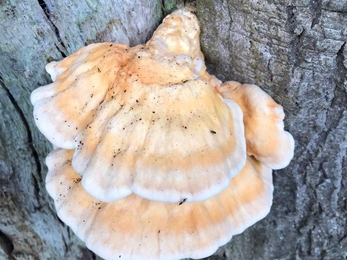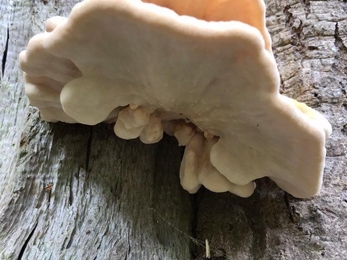Weekly Wild news from our reserves - 4 September
Robin's pincushion gall - Matthew Frith
The construction team have now left the site, leaving the team at Carlton Marshes busy completing the internal fit-out for planned opening later this month. Exciting times!
Chicken of the woods
This distinctive sulphur-yellow bracket fungus was spotted recently at Lound Lakes. Also known as sulphur polypore, or ‘chicken of the woods’, as the flesh is said to resemble chicken when cooked. The brackets can grow up to 40cm in diameter, usually high up on the trunks of oak, beech, chestnut, cherry or yew.
Meadow saffron at Martins’ Meadows
The pink, crocus-like flowers of meadow saffron are currently displaying at Martins’ Meadows. The leaves appear in the spring and may be confused with Ramsons - a potentially lethal mistake, since all parts of meadow saffron are poisonous. The flowers are also known as ‘autumn crocus’ or ‘naked ladies’, the latter name stemming from the habit of the flowers appearing without any leaves.
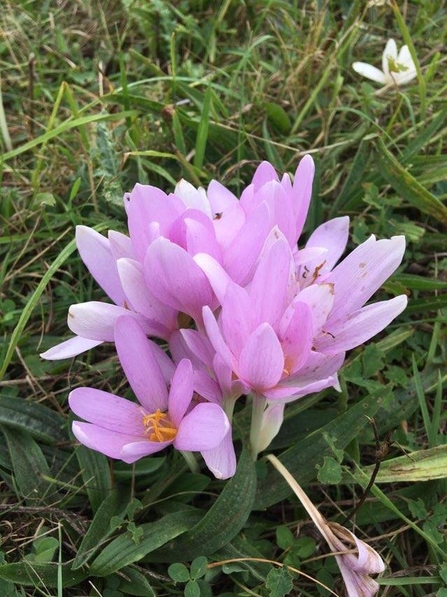
Meadow saffron at Martins’ Meadows – Ben Calvesbert
Robin’s pincushion
Living up to its name, the Robin's pincushion is a red, round, hairy growth that can be seen on wild roses, such as this one at Redgrave & Lopham Fen.
The Robin's pincushion (also known as the 'bedeguar gall') is a gall caused by the larvae of a tiny gall wasp, Dipoloepis rosae. The adult wasp lays eggs in the buds or developing leaves during mid-summer. Instead of buds developing into normal shoots and leaves, they are converted into hard woody structures that have an outer covering of moss-like leaves, which are either reddish pink or yellowish green. The internal part of the gall contains several chambers in which the grubs develop. The galls are fully developed during August and the insects overwinter inside the galls as pupae. During the autumn the outer covering of moss-like leaves tends to decay and this leaves the hard, woody centre exposed.
The gall is widespread and common and not harmful to the rose and so control measures are not required.
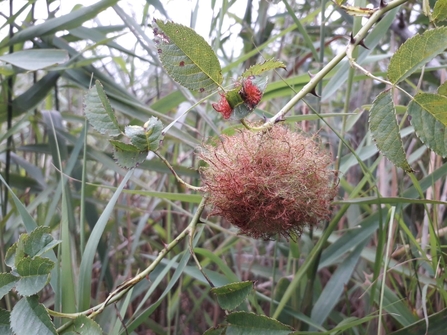
Robin's pincushion gall at Redgrave & Lopham Fen – Debs Crawford
Sedge harvest
Our volunteer team operating from Redgrave & Lopham Fen National Nature Reserve have been hard at work cutting and clearing the thick tussocky plants found across parts of the wetland. The task aims to encourage recolonisation of cladium saw-sedge, a target species for this designated site and helps restore habitat for the fen raft spider. Richard Young, Valley Fens Warden, says ‘The annual harvest has taken an extra week this year due to Covid-19 restricting volunteer numbers. Despite that our sterling team have been out in all conditions twice a week over the past month and have created a huge mound of biomass which is slowly breaking down on a marginal part of the site’.
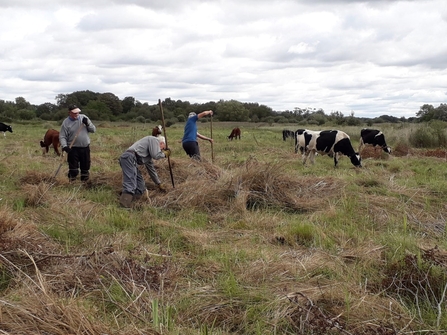
Sedge harvest at Redgrave & Lopham Fen - Richard Young


